
Are you looking for an autism-friendly vacation that is both fun and relaxing? Whether you want a beach holiday or a mountain retreat, you can find the perfect destination for autism-friendly vacations, so that everyone in your family can enjoy a stress-free vacation.
So let’s get planning, and start making memories!
Table of Contents
Understanding Autism-Friendly Vacations
A vacation can be a great way to relax and unwind, but for families with children who have autism spectrum disorder (ASD), planning and taking trips can be more of a challenge. Many parents of autistic kids worry about what they will encounter at their destination and whether it will create more stress than joy. Luckily, many locations understand the unique needs of travelers on the autism spectrum and offer an array of attractions that are tailored to accommodate the whole family.
Whether you’re looking for an accessible beach vacation or cultural activities that are fun for all ages, there are plenty of options for an autism friendly holiday. You don’t have to sacrifice quality experiences or excitement just because your child has special needs. From amusement parks and zoos to musical events and sightseeing tours, there is something for everyone in these autism-friendly destinations.
By doing some research before setting off on your trip, you can make sure that your family has a smooth journey. Knowing what amenities are available nearby can help make your vacation easier while keeping everyone entertained during the process. Whether you stay close to home or venture far away, here are some excellent resources that can help make your holiday even more enjoyable and accessible during this special time of year:
Types of Autism-Friendly Vacations
Autism-friendly vacations provide an opportunity for those on the autism spectrum, as well as their families, to participate in activities with other individuals who have a similar diagnosis. Whether you’re searching for a cruise experience, family camp, boutique hotels, or theme parks, there is something for everyone. Some are more accessible than others but all of them strive to meet the individual needs that are unique to each person with autism.
Cruises:
Cruise lines have embraced autism awareness and diversity in recent years. These vacations offer a wide range of activities and amenities that not only cater to those on the spectrum but create an inclusive environment where everyone can enjoy their time together. Amenities typically include sensory rooms and quiet zones on board, hydrotherapy pools, and supervised activities designed especially for children on the autism spectrum.
Family Camps:
Autism family camps provide families an opportunity to escape the daily grind of managing their children’s therapies and schedules so that everyone has a chance to focus on fun programming and activities together. Many camps offer access to licensed clinical professionals who specialize in working with those on the autism spectrum so participants have access to staff 24-hours a day during their stay or even year-round services as available. This type of setting also enables families to learn from one another while they become empowered through social connectedness within their community.
Boutique Hotels:
Boutique hotels can provide a comfortable place to stay while allowing individuals on the spectrum to explore autistic accommodations in a more natural environment because of its intimate atmosphere and scale. Aspen Grove Retreat provides this type of setting which includes specialized autism accommodation rooms designated specifically for those with anxiety-related symptoms; special meals tailored for sensory diets; priority seating for dining; scheduled snack breaks; extended check-in times; flexible visitation options; wifi access throughout the facility; individualized staffing ratio; supportive care staff members 24/7 availability, among many others services depending upon your interests or needs.
Theme Parks:
Check with the theme park you would like to visit and see what resources the may have available. May have:
- Quiet rooms
- certified autism travel professionals,
- kids camp
- sensory rom
- companion restrooms
- autism-friendly accommodations
Benefits of Autism-Friendly Vacations
For people with autism, planning a vacation can be a daunting task. However, when done right and with a bit of preparation, an autism-friendly vacation can be a great time for the entire family. There are various benefits to this type of travel, such as reduced anxiety and stress, improved sensory regulation and communication skills, relationship building with peers and/or family members in an enjoyable environment, increased independence and self-esteem, creating lasting memories with loved ones and feeling more confident to explore the world.
An autism-friendly vacation can also provide parents or caregivers with a much-needed respite from the responsibilities of caregiving; taking time to relax in a peaceful environment that may have previously felt difficult or impossible for both parent and child. Autism- Friendly resorts are popping up in all the popular vacation destinations creating opportunities for autistic children and their families to enjoy specialized vacations throughout the United States.
Additionally, it is important to find an appropriate accommodation that caters to the specific needs of the person on the spectrum; this could include seeking out hospitals near holiday hot spots that cater specifically to people on the spectrum – exactly what they are looking for and most importantly provide complete peace of mind during their travels! Finally one should look into purchasing specialized travel insurance that covers both medical treatment and other unexpected surprises while away such as flight cancellations or delays. Specialized travel companies may also offer packages designed specifically for people on the autism spectrum which allow them to make full use of available resources ensuring their comfort during their travels.
Planning an Autism-Friendly Vacation
Planning an autism-friendly vacation can be both exciting and overwhelming. Knowing what to pack and plan for before you go can make all the difference in making sure your trip is smooth and enjoyable.
For starters, take some time to research the area before you go. Look for attractions that are specifically designed for those on the autism spectrum, or Google “autism-friendly attractions” in your desired destination city or county to see what’s available. Be sure to read up on any safety precautions that may be required, such as wearing a life jacket, carrying a safety vest, or using helmets during certain activities.
When selecting a place to stay, look for properties that cater specifically to families with children on the autism spectrum. These places tend to provide additional accommodations such as noise-canceling headphones, extra pillows, and blankets if someone needs more sensory input while sleeping, a quiet room where kids can relax after busy days of sightseeing, gluten-free meals onsite or plates specifically tailored to those with dietary restrictions due to ASD conditions, private areas away from other guests where general meltdown behaviors and loud noises might occur without disturbing others—the list goes on!
Be sure to consider the accessibility of your destinations when planning your itinerary so that everyone feels comfortable during their trip. Distances between attractions as well as any health risks specific to the area should also be looked into ahead of time so everyone is prepared and understands what could potentially happen if certain precautions are not taken when out exploring.
Once you’ve planned out an itinerary that works best for everyone in your party—you’re ready for an unforgettable vacation!
Tips for Making an Autism-Friendly Vacation Enjoyable
An autism-friendly vacation can provide a much-needed break for those living with autism spectrum disorder (ASD) and their families. By taking into account the needs of those with autism, it can be possible to craft a fun, relaxing trip that everyone can enjoy.
Plan Ahead & Get Organized
The first step in preparing for an autism-friendly vacation is to plan ahead and get organized. Talk to the traveler’s caregiver or special educator to find out what activities they may prefer or if they have any special needs or sensitivities that should be considered. Planning ahead allows time to research accommodations and attractions that may offer sensory-friendly experiences at an autism-friendly destination. Be sure to ask if it includes accessible features such as low noise levels, adjustable lighting, and wheelchair access. You will want to confirm if they have door alarms, outlet covers and if a service dog is allowed in the room. Also, ask if the facility has an autism certification and a disability access service.
You may want to ask what other local businesses provide special accommodations to help with sensory issues.
Comfort Kit
It’s also important to put together a comfort kit filled with items like fidget toys, noise-canceling headphones, favorite snacks and drinks, and other items the traveler might need throughout their journey. It’s a good idea to bring along familiar comforting items from home, like a stuffed animal or blanket from home or photos of family members who cannot travel with you on the trip.
Prioritizing restful travel days is another key factor when planning an autism-friendly vacation. Plan a few rest days during your trip so your travelers don’t get overly fatigued from long travel days or too many activities in one day. Take breaks during vehicle rides, bring along comfortable pillows for overnight trips and make time for naps if needed.
Finally, being flexible is essential when planning an autism-friendly vacation; prepare for changes in plans as well as unpredictable behavior so you’re prepared onsite if anything unexpected comes up. Offering plenty of positive reinforcement while out and about will also go a long way in helping ensure everyone has an enjoyable experience on vacation!
Common Challenges with Autism-Friendly Vacations
When planning family vacations with someone affected by autism, families face a variety of challenges that require special consideration. Although travel is an awesome experience that can create great memories, be sure to plan ahead to help ensure a positive and safe experience for everyone involved.
Common problems associated with autism-friendly vacations include sensory overload, understanding instructions, adjusting to new environments, communication difficulties, and fatigue. Sensory overload can occur when autistic individuals become overwhelmed by the sounds, lights, and smells of an unfamiliar environment. Training on how to respond in certain situations should be part of the preparatory process before leaving home as it helps reduce or prevent meltdowns or behavioral outbursts when exposed to stimulus. It is also important that instructions are given in simple terms with visual cues or diagrams so they are well understood.
Changes in Routine
Families traveling with autistic family members should also recognize and be prepared for changes in routine as this can lead to anxiety or distressed behaviors due to stress and unfamiliarity. Being sensitive to the individual’s specific needs such as providing quiet spaces along with familiar items from home can help them feel more comfortable during their trip. Many autism families use the can card or social narratives to help guide social skills and promote positive sensory awareness.
Overstimulation
In addition, parents should protect against overstimulation which could lead to exhaustion while traveling; establishing restful locations whether indoors or outdoors throughout the day will aid in refocusing energy levels and restoring balance before further activities can be attempted again. Your hotel room or comfort zone will help accommodate the needs of your family. If you can’t find what you are looking for, contact guest services and explain the needs of families with autism and see how they are able to assist you and improve what they offer the autism community and those with developmental disabilities.
Communication difficulties may also arise which require patience and understanding if any arguments arise between family members affected by autism; allow yourself plenty of time so emotions do not get out of hand when possible misunderstandings happen on vacation. By being prepared in all areas including functional communication strategies prior to vacationing, families will have better chances of enjoying travel more fully while managing common challenges associated with autism-friendly vacations effectively at the same time!
Resources for Autism-Friendly Vacations
Planning a vacation for a family that includes an individual with autism can be a complicated process. It is important to identify potential barriers and plan in advance to make the trip more enjoyable for everyone. Fortunately, there are now many organizations and companies dedicated to providing Autism friendly vacations.
These resources include agencies that specialize in travel services for individuals with autism and their families, micro-boards of directors or care networks that help coordinate tourism activities, and websites designed to list available accommodations or attractions tailored specifically to people on the spectrum. These providers may offer personalized vacation packages customized according to the needs of each individual, as well as resources regarding health-related matters, safety tips for travelers, cultural assistance, informational materials concerning behavior management techniques during travel, sensory appropriate activities and sites.
When making plans it is always advisable to start early. Working with experienced personnel specialized in assistive services can provide insight into exercises that will help individuals adjust prior to their arrival at their destination since any unfamiliar environment can easily lead to anxiety or stress.
From accommodations and transportation means chosen specifically for persons on the spectrum to adapted recreational activities prepared for those dealing with special conditions such as autism spectrum disorder (ASD), these organizations possess the understanding and professional resources needed not only to make your trip less daunting but also very rewarding in terms of satisfaction level achieved by both parents and children alike.
Just have fun
Planning for a vacation for a family with a member who has autism needs careful planning and research to make sure everyone will have a good time. It involves understanding where to go, what activities are available, and what resources you can use.
We’ve provided some tips and information on how to plan an autism-friendly vacation; but no matter what kind of trip you’re planning, it’s important to bear in mind that the best way to enjoy your vacation is by being understanding and respectful of the person with autism in your family. Make sure they feel included in the process while still ensuring their safety.
Most importantly, remember that it doesn’t have to be perfect – just have fun!
Practical How-to’s for Fun Autism-Friendly vacations

Travel Tips for Autism-Friendly Vacations.
I’d like to introduce you to one of my dear friends and travel buddy. We go way back to when travel was spontaneous and easy to plan. Long before we all had kids, we traveled to Italy together. I think it was the first time in Italy for both of us. Oh… the stories we could tell…but I’ll save that for another day. Today we want to share some super helpful tips and insights about autism-friendly vacations.
When we hung out eating gelato and sipping Italian coffee, we never in a million years thought our lives would look like they do now. We live half-a-world away from each other now, but we still travel with our families and love making memories and enjoying each other all along the way.
We hunted for each other’s kids when we thought they were lost. We’ve cried over disappointment & rejoiced in each family’s successes. We are truly grateful that we have so many memories to share together.
One thing holds true, no matter where we are in the world and no matter what life throws at us, we can count on loyalty and friendship. We are each grateful (even on the hard days) for what we have and how we can use it to bless those around us.
It’s our hope that this collaborative post will encourage you to travel more with your kids that have an autism spectrum disorder. Being sensitive to the unique needs of each member and how to create an enjoyable and memorable trip for everyone.
Game-Changing Ways To Use Social Stories & Autistic ABCs With Special Needs Kids
To kick things off I invited Melodie to share with us how she uses social stories to help create routines at home for her autistic children.
Melodie’s Story
I’ve asked Melodie, author of Autistic ABC’s: A family’s reflection on the journey toward hope, to share with us a bit of her family’s story and a few of the Autistic ABC’s that come into play when she makes travel plans for her entire family.
Our two sons, Josh and Sam were both diagnosed with autism. Life slowed way down as we learned to cope with our new normal. Thankfully, traveling by car was enjoyable for our autistic kiddos. The constant hum of the road seemed to quiet and soothe. Since we lived in Portland, Oregon, and my Mom lived in Sacramento, California, we drove to and from twice a year to visit her. Heavy traffic would sometimes aggravate, but that seems universal.
Create success for your family with these autism-friendly vacations.
What follows is an excerpt from Autistic ABCs: A family’s reflection on the journey toward hope, written by Melodie Eaton Steele.
H
Healthy
When you’re pregnant, everyone asks whether you want a boy or a girl. The standard response is “We don’t care, as long as it’s healthy.” What if you find out that your child is not healthy?
D
Dromedary
“Dromedary!” Josh unexpectedly exclaimed from the backseat of the car. Where does he pick up these words? Does he know what they mean or are they merely memorized syllables and why do they pop up in the middle of the highway?
“What’s a dromedary?” I asked.
Long pause and then:
“Camel!”
These amusing outbursts entertained us on the road and were a welcomed relief from our kids’ version of “Are we there yet?”
S
Social stories
Social stories are sentences or paragraphs written in anticipation of new situations. They detail what will happen and when providing a visual reference regarding the anticipated experience.
Woe to whatever should interrupt this written schedule.
We gave our kids pencils and “travel” notebooks that contained the written itinerary as well as blank pages for them to draw or write in. Each rest area, food, and gas stop was on the list, and we would cross them off as we re-entered the freeway.
V
Vulnerable
How I feel waiting outside the men’s lavatory while one of my kids uses it by himself. Sometimes it seems socially acceptable to take my 6′, 180-lb. male teenager into the women’s bathroom with me; sometimes it doesn’t. Thankfully family restrooms are being installed in more and more places.
To help you get an idea of how to use social stories (sometimes called social narratives or can cards) & itineraries for a road trip, here are some examples of what Melodie uses with her boys.
Autism-Friendly Vacations – Social Story Example:
- On Saturday we will drive to Grandma’s house.
- Josh and Sam can choose one toy and two DVDs to bring.
- We will bring our blankets and pillows.
- We will eat at McDonald’s.
- We can play at the playland.
- We will take breaks at rest areas.
- We will use the bathroom.
- We can take walks and play frisbee.
- We will drive until bedtime.
- We will sleep when we get to Grandma’s house.
- Sam and Josh can be super flexible if something unexpected happens.
- Sam and Josh can be good travelers.
- Mom and Dad are proud of Josh and Sam.
Autism-Friendly Vacations Family – Itinerary Example:
Having an itinerary your child can check off along the way is really helpful in allowing them to know and understand where they are in the journey from point A to point B. It helps vacation destinations for autistic families have a great time enjoying the journey. Here’s a sample itinerary that Melodie has used with the boys for many trips to grandma’s house.
1. Start trip to Grandma’s house.
2. Break at McD in Springfield (include exit numbers if it matters to your kids).
3. Lunch (where?) at Grants Pass.
4. Break/ Gas at Weed.
5. Dinner (Where?) at Redding.
6. Break at Woodland.
7. Arrive at Grandma’s house.
8. Go to bed.
You can include more specifics or make smaller lists for each break.
Here’s another sample of a smaller list used for a short break during their road trip.
1. Use the bathroom
2. Play in park
3. Eat lunch
4. Get gas for the car
5. Use the bathroom
6. Get back in the car
These lists and examples are so helpful for everyone!
With Melodie’s help, I’ve put together a downloadable bundle for you to print and use with your family. It includes:
- Fill in the blank social stories & itineraries
- Planning Checklist
- Packing with Kids packing tutorial
- Links to additional resources for autistic family travel
Life is full of challenges. Autistic ABCs is for those who wrestle with the questions that accompany a difficult diagnosis. The book traces the Steele family’s journey from confusion and grief to peace, joy, and hope.
Soft Cover Version
Kindle Version
I want to thank Melodie for opening her heart to us about the journey they have traveled with autism. It’s our hope that these printable tools, along with her book will encourage and empower you in the day-to-day life challenges of living with autism.
Autistic Family Travel Bundle & Book
Related Products: Autistic Field Trip & Travel Planning Bundle
You may also enjoy
- Let’s Study Famous Folks- November Calendar Of Famous People
- Let’s Study Famous Folks – April Calendar Of Famous People
- Let’s Study Famous Folks – March Calendar of Famous People
- Let’s Study Famous Folks – February Calendar Of Famous People
- Let’s Study Famous Folks – January Calendar of Famous People
- Let’s Study Famous Folks – September Calendar of Famous People


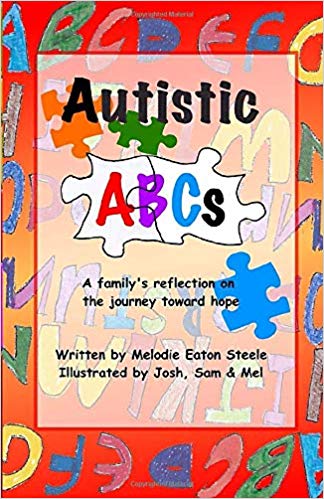

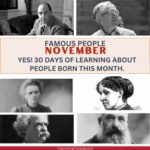

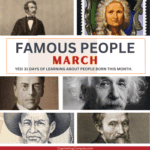
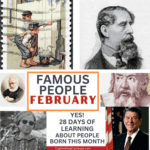
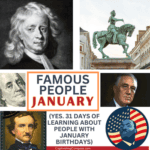

1 thought on “Autism-Friendly Vacations: Travel Tips For Success”
Comments are closed.